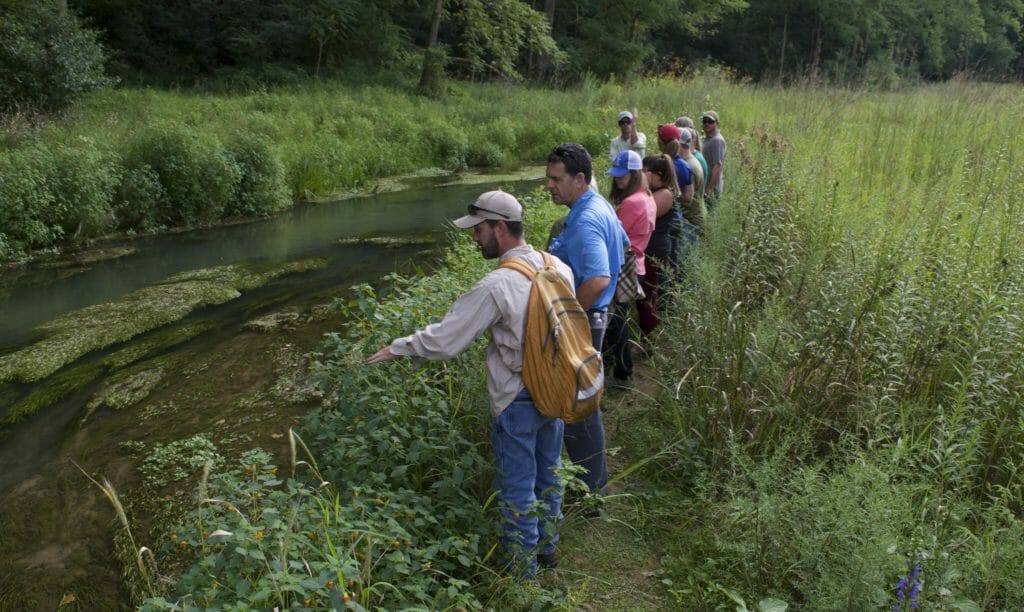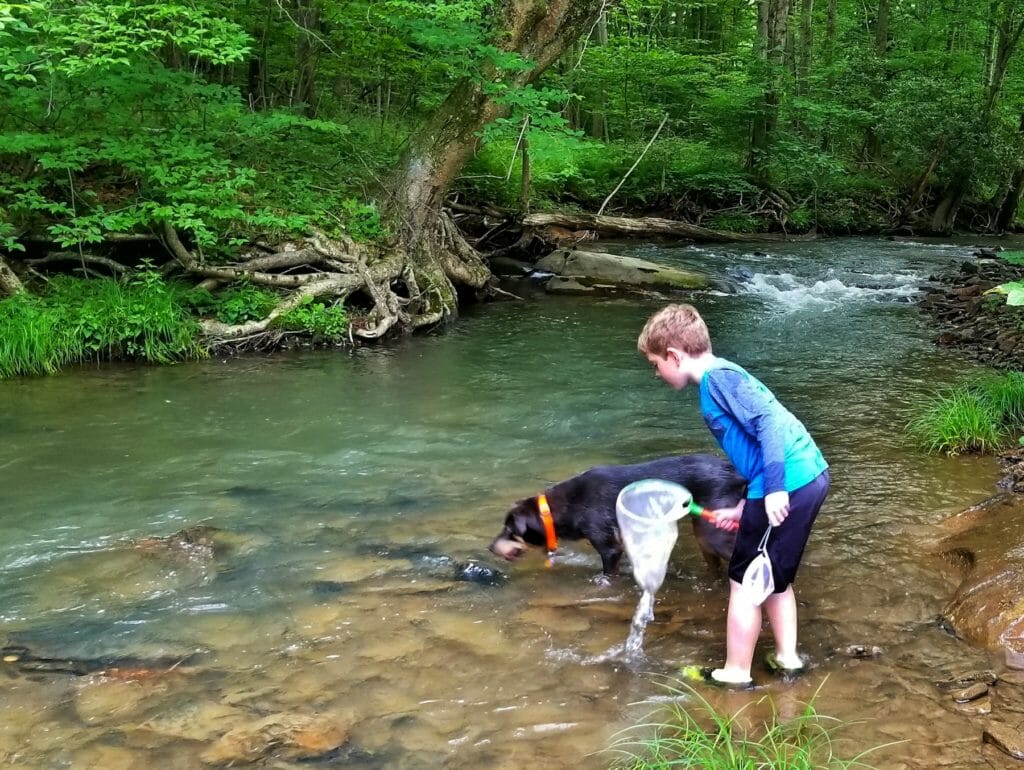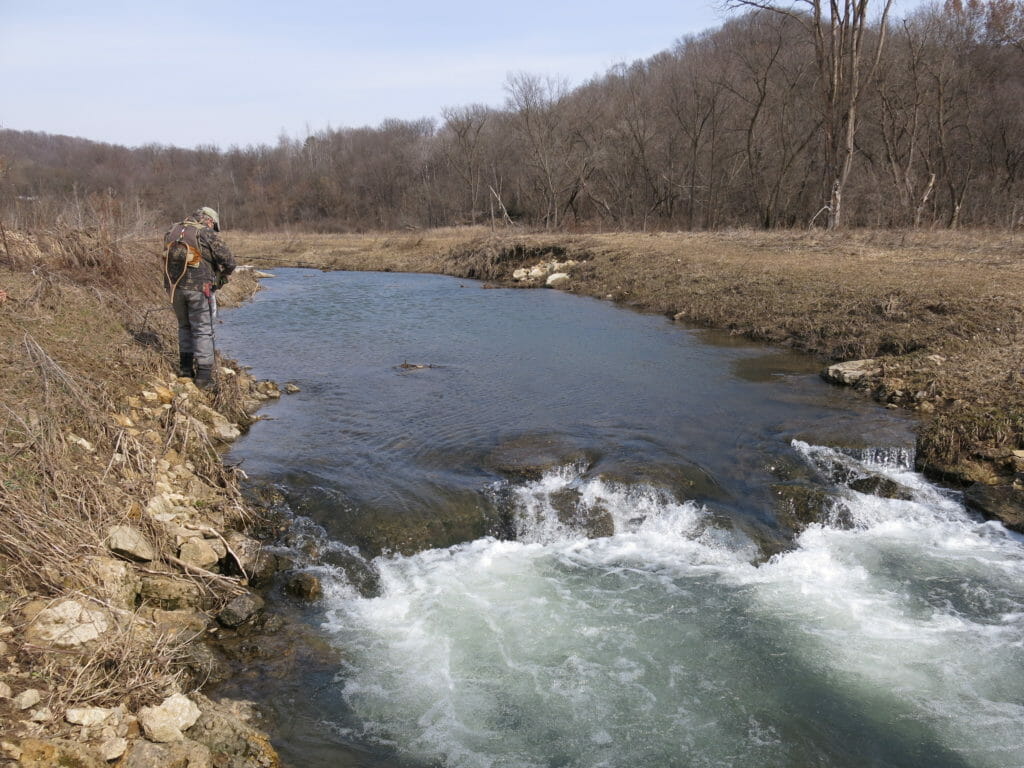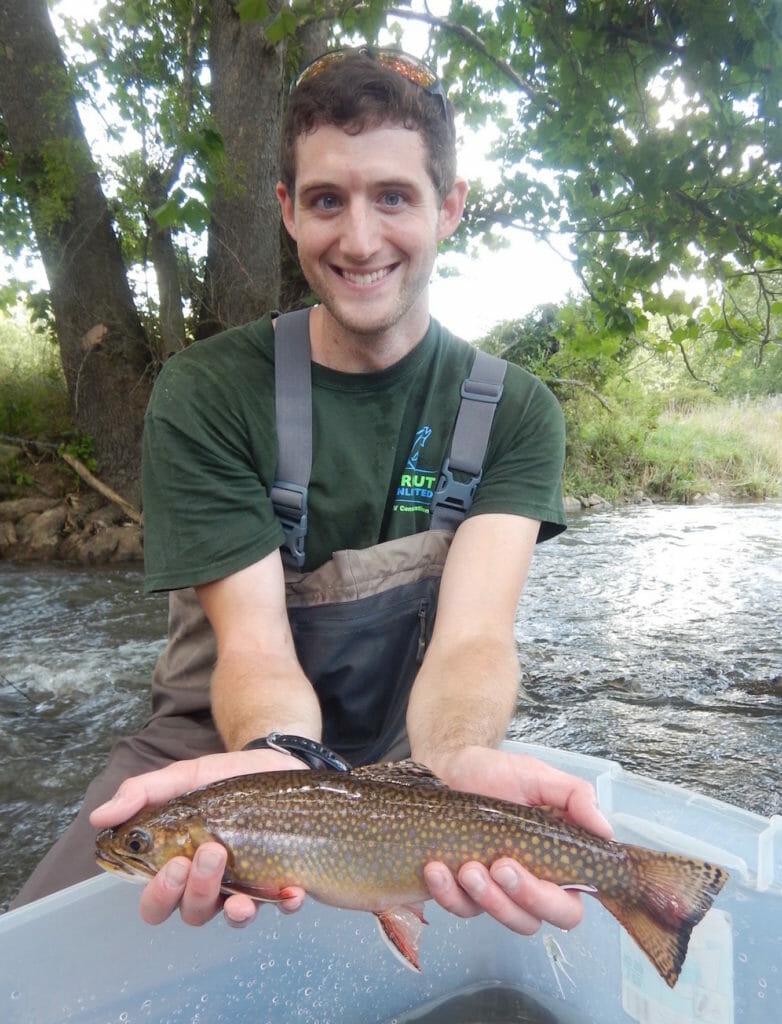The fishing ain’t what it used to be.
We’ve all heard that familiar lament, usually uttered by an angler trudging back to the parking lot after getting skunked. As conservationists, we know it’s too often true. The losses of trout and salmon fisheries relative to their historic distribution are well known to all of us. But this isn’t a story about loss.
Sometimes the fishing “ain’t what it used to be” because it’s better.
Last year TU reconnected 406 miles of habitat and restored 365 miles of streams.
One of those streams where TU has worked is Mossy Creek in Virginia.

When I first moved to the D.C. area in the early 2000s people recommended that I drive down to Harrisonburg, Va., and fish a spring creek called Mossy. I parked, walked down to the stream, and saw an old dam and a shallow, silty creek with high eroding banks.
I recently went back to Mossy Creek with TU’s Seth Coffman. Thanks to restoration work by Seth and the landowners, including Brian Trow of Mossy Creek Fly Fishing, the dam is gone and the stream above it has beautiful meanders with deep runs and clean gravel.
Similar stories play out on fisheries across the country. Another example comes from Pennsylvania, where there are 5,500 miles of streams that are impaired by polluted drainage from abandoned mines. Of those stream miles, 4,000 have cold water and the potential to be restored as trout fisheries.

The work of cleaning up abandoned mines is tedious and expensive. But through persistence and strong partnerships, and the availability of the Office of Surface Mining’s AML Fund, TU and others have made progress by installing treatment systems that neutralize acidity and remove pollutants before they reach the stream. The result is that within the West Branch Susquehanna basin alone we have gained 216 miles of trout water, in addition to 28 miles of the mainstem West Branch that is now managed for catch-and-release angling.
In the Midwest’s Driftless Area, restoration efforts focus on the region’s 600 spring creeks, many of which flow through agricultural land. Early farming practices resulted in catastrophic erosion, and by the time conservation practices began to stem the soil loss, enough damage had been done to create lasting harm to trout streams.
In the early 2000s, TU volunteers recognized the success of early stream restoration efforts and set out to create a regional program that would increase the pace and scale of restoration work. At the time, about 3 to 5 miles of restoration work was getting done across the four-state area. Today, through the Driftless Area Restoration Effort, we are completing 20 miles of restoration a year.

In total, more than 150 miles of spring creeks have been restored in the Driftless Area over the past decade. And the fishing has improved dramatically. Some Driftless Area streams have seen a ten-fold increase in trout populations from pre-restoration numbers. Many local farming communities now also cater to anglers as part of the $1 billion economic benefit from trout fishing in the Driftless Area.
Another place where agricultural partnerships are making a big difference for trout is in the Potomac River headwaters of West Virginia, where we are working to restore a trophy native brook trout fishery. TU has worked on nearly 400 farms, installing 2 million feet of livestock exclusion fencing and restoring and reconnecting dozens of miles of streams, enabling brook trout to expand their range.

TU’s Dustin Wichterman has a vision for what the area will become and can often be heard saying: “I have a dream, and it’s 20 inches long.” We haven’t started seeing 20-inch brook trout yet, but we are seeing thick, 15-inch native brook trout that tell us we’re well on our way.
I could go on. Our partnerships with forest managers such as the U.S. Forest Service and forest landowners like Weyerhaeuser to add large wood to streams is resulting in documented increases in brook trout biomass.
The Battenkill River, where the trout fishery had become a shadow of its former self, is rebounding thanks to the efforts of TU volunteers and partners who are adding much-needed instream cover. Through the work of TU volunteers who annually dedicate more than 700,000 hours of their time to TU’s mission, our 220 staff, and our outstanding partners, many of our fisheries are on the upswing.
So, the next time you hear someone say that the fishing ain’t what it used to be, ask them what they mean. Maybe it’s gotten better.
Keith Curley is Trout Unlimited’s vice president for Eastern Conservation and an avid angler.



